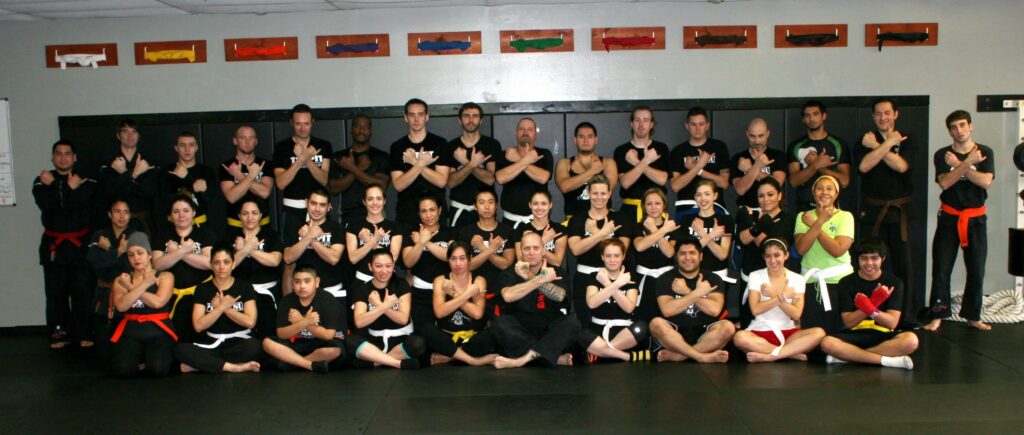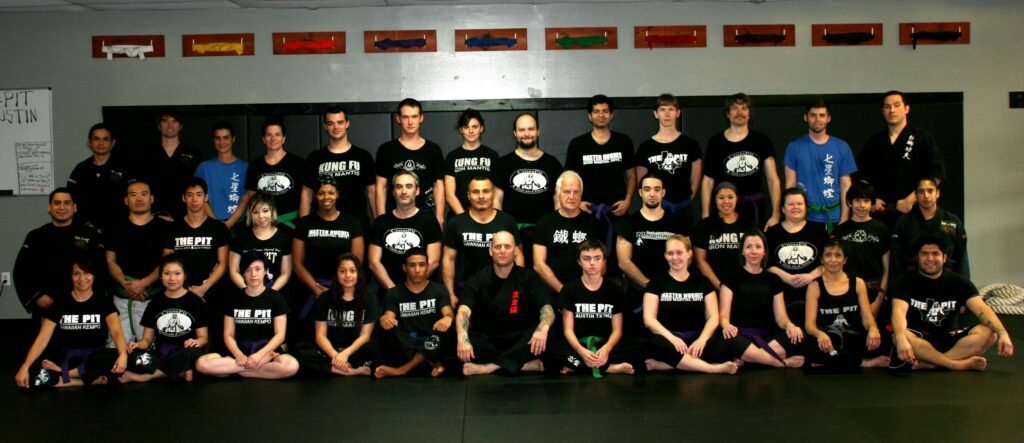
When I first moved to Austin, Texas, I never imagined that I’d become a martial arts teacher. It wasn’t part of my plan. In fact, when Sifu Raymond Fogg and Sigung Henry Chung encouraged me to start teaching, I hesitated. I thought, Am I even ready for this? I wasn’t sure if I wanted to be a Sifu—maybe just a coach or senior student. But they insisted: No, you need to be their Sifu.
The Humble Beginnings
So, I started small. I taught a few neighborhood kids, just for fun, just because I was told I should. I put up some flyers, and slowly, more people started showing up. At first, I was teaching out of my garage, averaging around eight students—though they rarely all showed up at once. I began with two classes per week at night, then increased to four.
Eventually, I decided to take things a step further. I found a small space to sublease in a strip mall next to a Jazzercise studio. Back in the ’90s, it wasn’t easy to rent a space for martial arts—landlords didn’t see it as a real business. But I was determined. I even sold my motorcycle just to afford the first and last month’s rent.
The Reality Check
I had one goal: to create a cool space where I could train, decorate it as a true kung fu school, and immerse myself in the art. What I didn’t realize was how much business knowledge I lacked. The bills came in fast, and they were much higher than I expected. It took a year of struggling before I finally had enough students for the school to pay for itself.
For years, I stuck to teaching traditional Seven-Star Praying Mantis Kung Fu. I was still in college, balancing school with teaching. When I finally went full-time, I faced another big challenge—learning how to actually run a business.
Lessons in Teaching
At first, I just had students follow along with my own training. I taught the way I had been taught. Then, one day, a student said, Sifu, you’re killing us! We can’t keep up! That was a wake-up call. I realized I had to separate my personal training from my teaching and focus on my students’ progress.
The next major shift came when I introduced structured tests and rankings. Traditional kung fu didn’t have belts, but I needed a clear system to track student progression. When I saw that many students weren’t progressing the way I expected, I knew I had to improve my teaching methods.
The Business Side of Martial Arts
The biggest shift happened when I fully embraced the business side of running a martial arts school. It wasn’t just about finances—it was about organizing classes better, structuring lessons, and truly understanding how to help students learn. I connected with other martial artists who successfully ran professional schools. One of the most influential figures was Master Pablo Zamora, who not only taught me business but also transformed how I approached teaching.
For years, I thought business was bad—that it would corrupt the purity of martial arts. But I was wrong. I saw firsthand that great martial artists could also be great business owners, family men, and community leaders.
Growth Through New Training
With better financial stability, I was able to invest more in my own training. When I moved to Austin in ’95, there weren’t many other kung fu practitioners around, so I sought out different influences. In 1997 I found Bekir Algan a yoga teacher who had studied under B.K.S. Iyengar, and I trained with him for 20 years until his passing. His teaching was transformative—his ability to analyze movement, understand the human body, and address emotional barriers was unlike anything I had seen.
That experience shaped how I worked with students. I began paying closer attention to their struggles—both physical and mental. Many times, people avoid training because they don’t want to face their personal challenges. But real progress happens when you push past those inner obstacles.
A Continuous Journey
Master Pablo Zamora later introduced me to John Hackleman, who ran a highly successful family dojo. Training with him and his students, including UFC fighters Chuck Liddell, Glover Teixieira and Court McGee, opened my eyes even more to the balance of tradition, modern, business, and community.
Looking back, I see how every challenge—hesitation, financial struggles, adapting my teaching—was a necessary step. Teaching isn’t just about passing down techniques; it’s about guiding students through their own journeys, helping them break through their limits, and ultimately growing together.
And to think, it all started in a garage with a handful of neighborhood kids.

